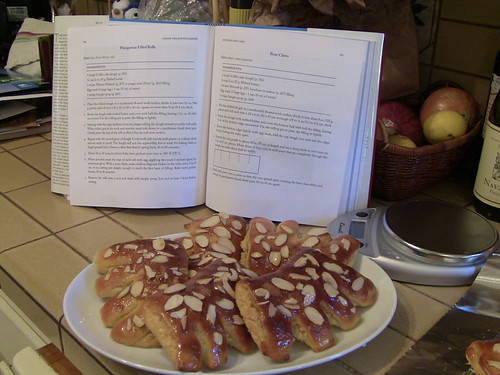
I received my copy of Inside the Jewish Bakery a few days ago, and fairly quickly settled on the Bear Claws as the first recipe I wanted to try. I’m kind of an almond paste freak . You could call me a “MarziFan”.
I made Bear Claws the first time a month or so ago, using the recipe from Fantasia Bakery. That one used a Danish pastry dough—which was delicious—but the filling wasn’t right…too thin and eggy. Stan and Norm’s filling, using a good portion of cake crumbs, looked promising. The Bear Claw recipe in Inside the Jewish Bakery uses what they call “Coffee Cake Dough”, enriched with egg, sugar, shortening and milk powder, but not super sweet and fatty.
I’m not going to post the recipe, unless Stan says I should, but I’ll give you a bit of a narrative.
The dough takes a long time to come together. It’s fairly batter-like. It may be that my Bosch is not the ideal mixer for a dough like this; a KitchenAid might work better. After about 20 minutes of mixing, the dough took almost two hours to double. Then I punched it down, formed it into a ball and put it in a covered bowl in the fridge overnight. The next morning it had doubled again and was nice and poofy.
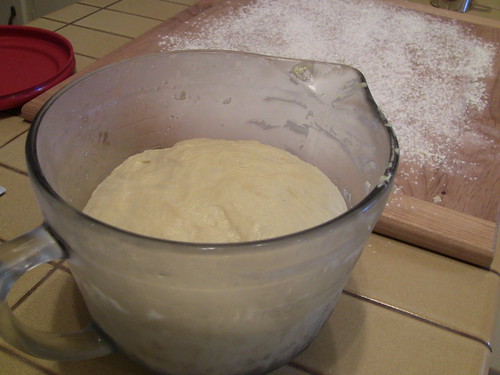 .
.
This morning I made up the filling (almond paste, sugar, egg, cake crumbs, water, milk powder, salt) and divided the dough ball into three (the recipe says divide in three, but then refers to two batches making six pastries each…confusing). The dough had a very nice texture, it is soft even right out of the fridge, and needed lots of flour on my prized New York Bakers kneading board. But it was extensible enough to roll out to quarter inch thick strips.
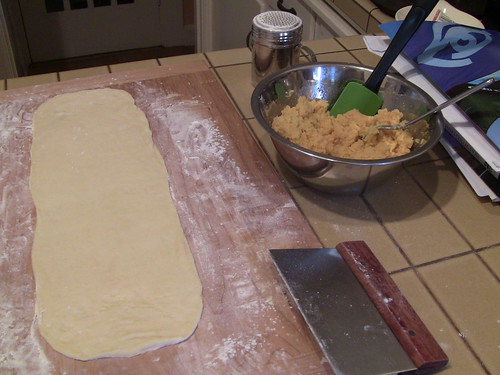
The dough sheet is brushed with butter and the filling is spread over half (ok, I admit I made a bright yellow Pillsbury cake mix cake for the crumbs).
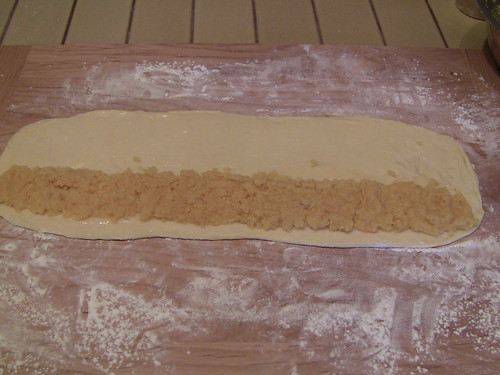
Then, its folded and sealed and stretched and divided.
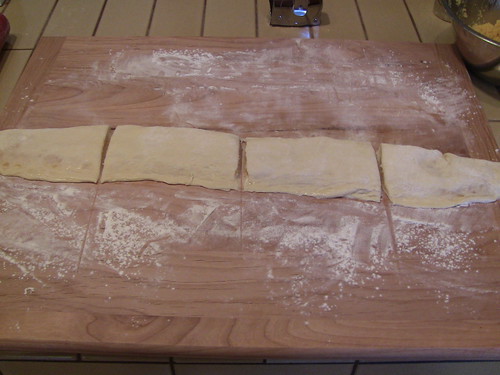
Then the pieces are cut and bent to make the bear claw shape (some nicer than others).
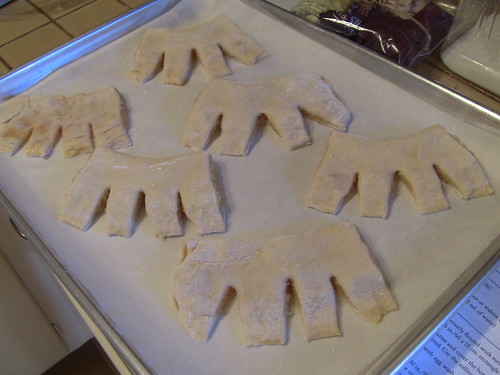
After about a 75 minute proof, the pastries are brushed with egg wash and sprinkled with sliced almonds (the recipe omits the almonds, but I don’t like my claws bare).
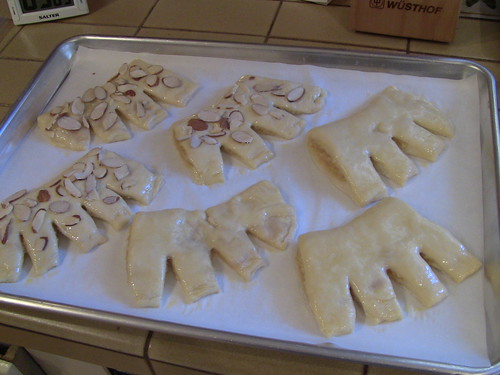
After baking, they get a brushing of simple syrup. And they’re ready for their close-up.
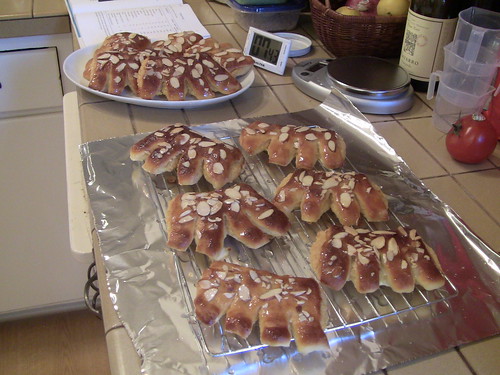
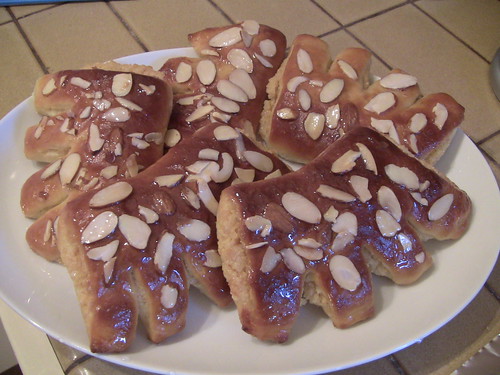
These are delectable! The filling is just like the best bakeries’. The dough is not too sweet and has a nice moist texture, but with an eggy crust.
One recipe into my experience with Inside the Jewish Bakery, I’m happy, and looking forward to trying more.
Thanks, again, Norm and Stan. Good work!
Glenn